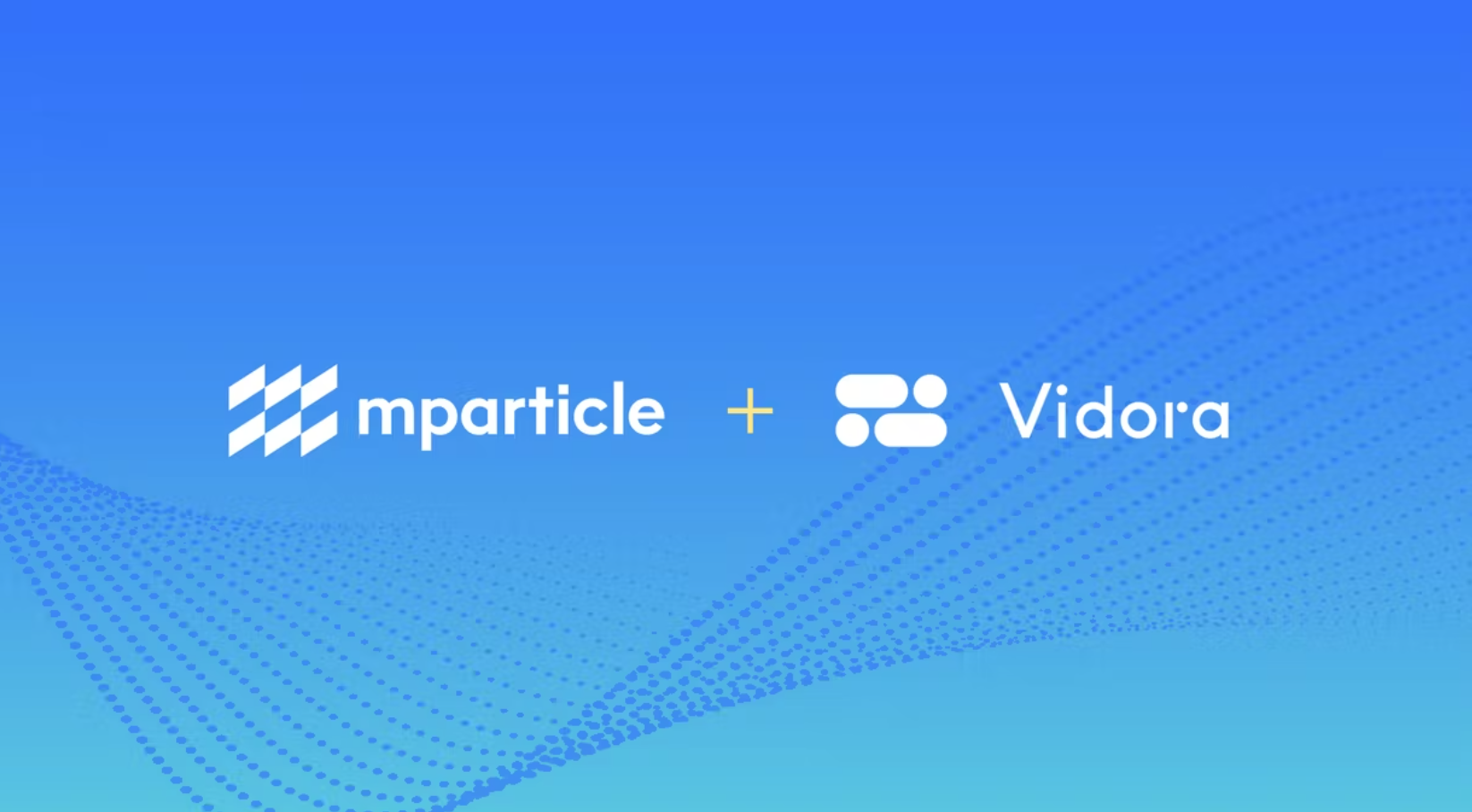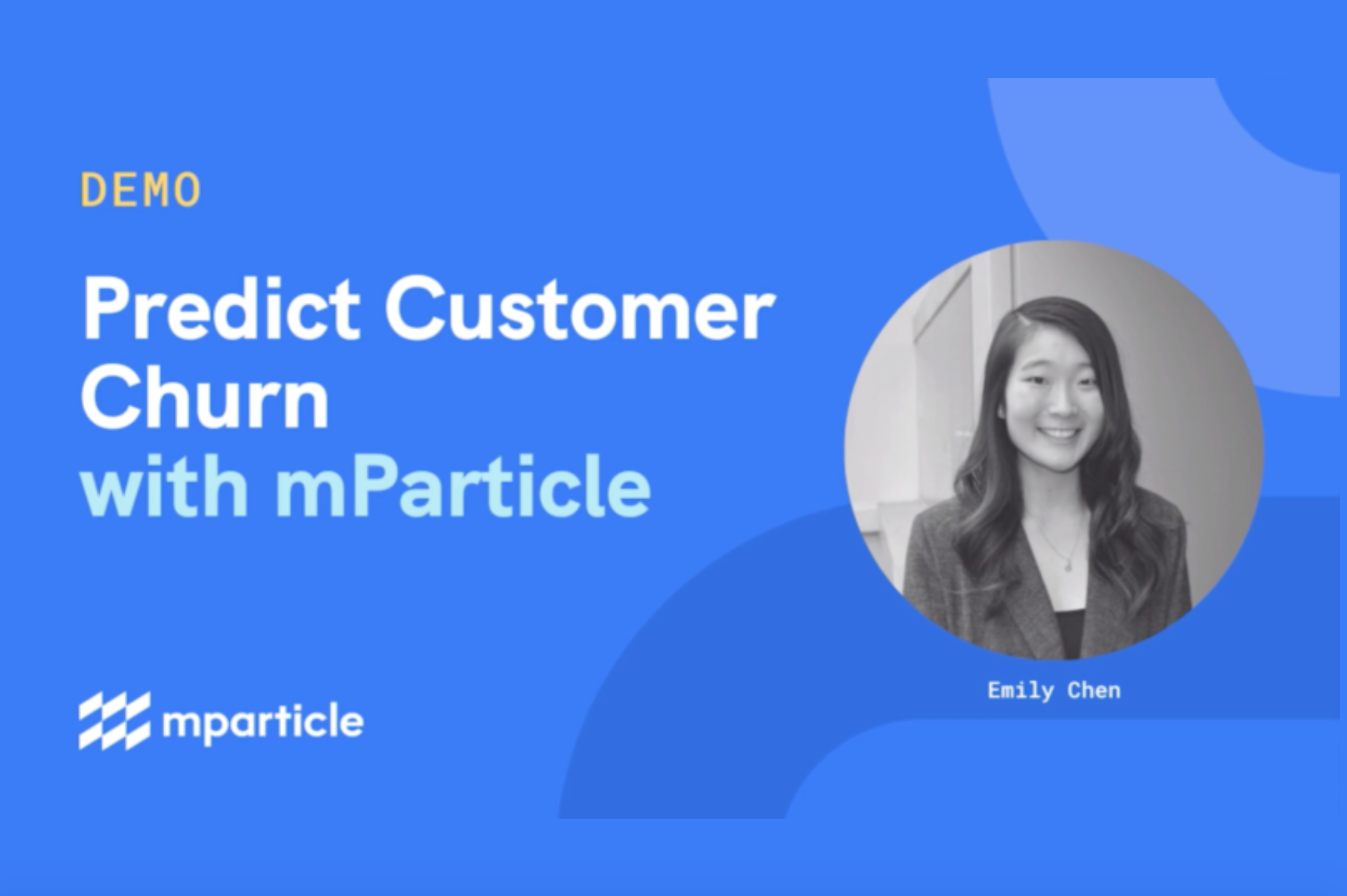
Machine learning decisioning is the natural evolution of machine learning technology from making “predictions” to enabling a business to make “prescriptions” (aka “decisions”) from data. Decisions enable a business to take actions on their users and have those actions be optimized and personalized for each user over time. Decisioning is one of the hottest areas in machine learning for consumer data by enabling marketers, product managers, and adtech teams to scale their personalization efforts with use cases like next-best-action and next-best-offer.
At Vidora, we’ve focused on leveraging both historical and real-time data to learn consumer behaviors. By using real-time data in addition to historical data, decisioning can even target anonymous and first-time users, thereby helping solve some of the problems resulting from the demise of third-party cookies.
In this post, we will answer some of the common questions which businesses have when contemplating utilizing machine learning decisioning in their workflows.
1. What is Machine Learning Decisioning for Consumer Data?
Machine learning decisioning refers to using machine learning algorithms to help a business make choices to maximize the lifetime value of their customers. The machine learning component enables the decisioning to learn and evolve over time as new data becomes available, and leverage those learnings to personalize on a per user basis at scale. This enables a business to maximize the value of every data point in order to drive the highest value for each user.
Examples of machine learning decisions include –
- When to show a paywall to a user?
- How much to charge a user for a subscription product?
- Next-best-action
- Next-best-offer
2. What is the Difference Between Machine Learning Predictions and Machine Learning Decisions?
Businesses can leverage machine learning in different ways. Typically, a business will begin using machine learning to make “predictions”. However, we’ve found that many businesses ultimately want to use machine learning in order to make “decisions” which often involves a different type of machine learning known as “prescriptive” machine learning.
A machine learning prediction uses past data to forecast what will happen in the future. When considering consumer data, a prediction will often describe what a user will do in the future –
- Will a user churn?
- Will a user purchase a product?
- Will a user read an article?
- Will a user subscribe?
A decision tells a business how to engage with a user in order to generate a desired outcome. In many ways, a decision is the next-step in how a business uses machine learning after they consider predictions. For instance, a churn prediction will tell a business the likelihood of a user churning. While a prescriptive or decisioning algorithm will tell a business how to engage a user in order to prevent churn.
Read more here on taking the leap from machine learning predictions to machine learning decisions.
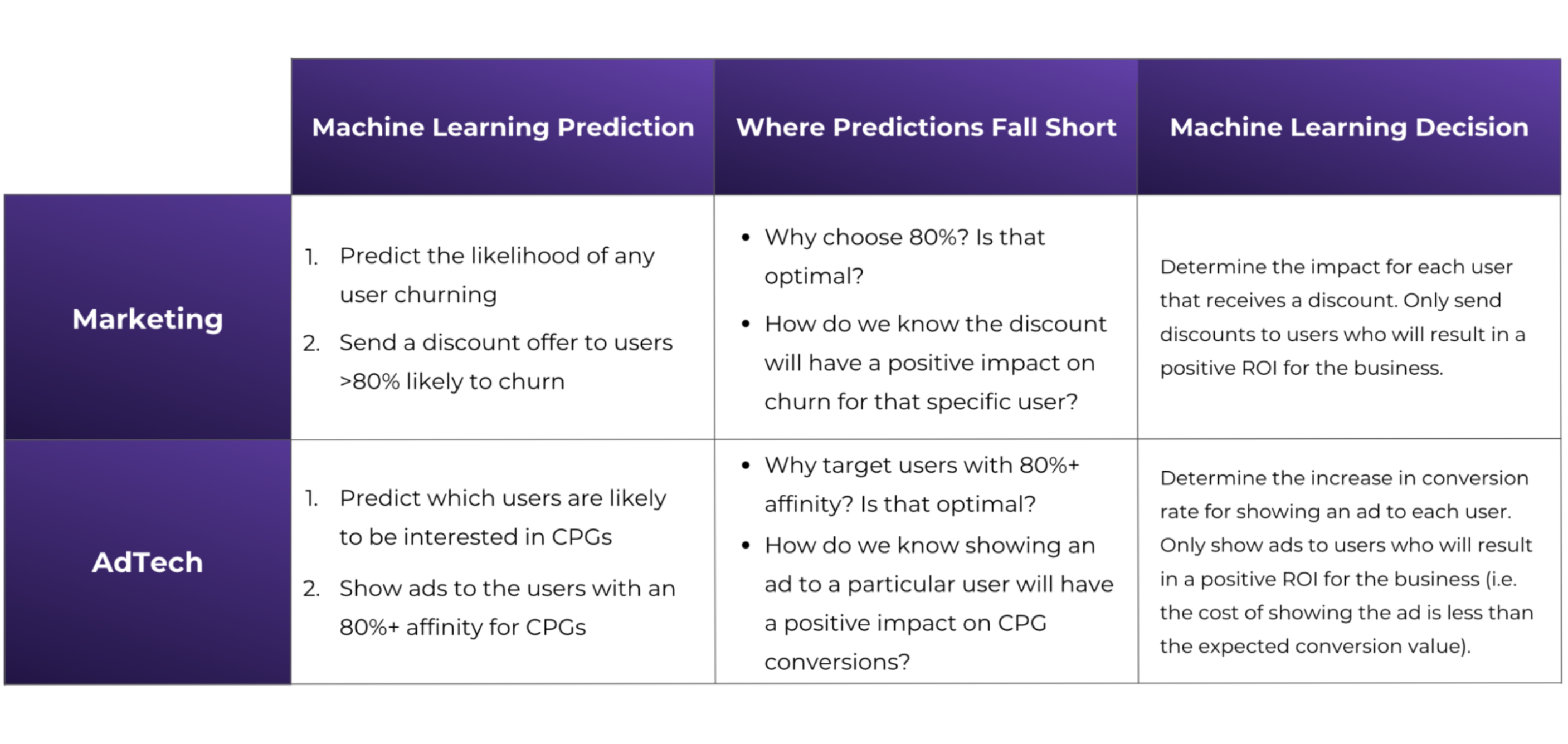 Examples for marketing and adtech teams on the differences between predictions and decisions.
Examples for marketing and adtech teams on the differences between predictions and decisions.
3. What are Some Common Use Cases for Machine Learning Decisioning?
There are hundreds of use cases for machine learning decisioning. Below we list out some common variations.
- Dynamic decisioning
- Dynamic paywalls
- Registration conversions
- Next-best-action
- Next-best-offer
- Item recommendations
- Category recommendations
Advanced User Segmentation Decisioning
- Down-funnel conversions optimization
- Segments optimized for brand lift (uplift modeling)
- Next-best-offer for coupons and promotions
- Prescriptive churn reduction
- Prescriptive conversion increases
4. What is Real-Time Machine Learning?
Real-time machine learning enables a business to use the most recent user behaviors in order to make predictions and decisions on users. For example, to make a machine learning decision for anonymous and first-time users, a business needs to leverage data from a user’s current session. Real-time machine learning enables a business to do just that. At Vidora, we can leverage a user’s last action to optimize a decision for that user, returning decisioning within 100ms.
Here are a few examples of use cases we see with utilizing real-time machine learning decisioning:
- “Which users should I target with this onsite promotion?”
- “What is the best offer, message, or experience to put in front of this user onsite?
- “Who should I target with outbound marketing campaigns?”
- “Which categories of videos should I recommend to these users?”
5. What are the Differences Between Batch Historical Data and Real-time Data?
Real-time data typically involves leveraging data from a user’s current session. This data can be very valuable in determining what decision to make with a particular user.
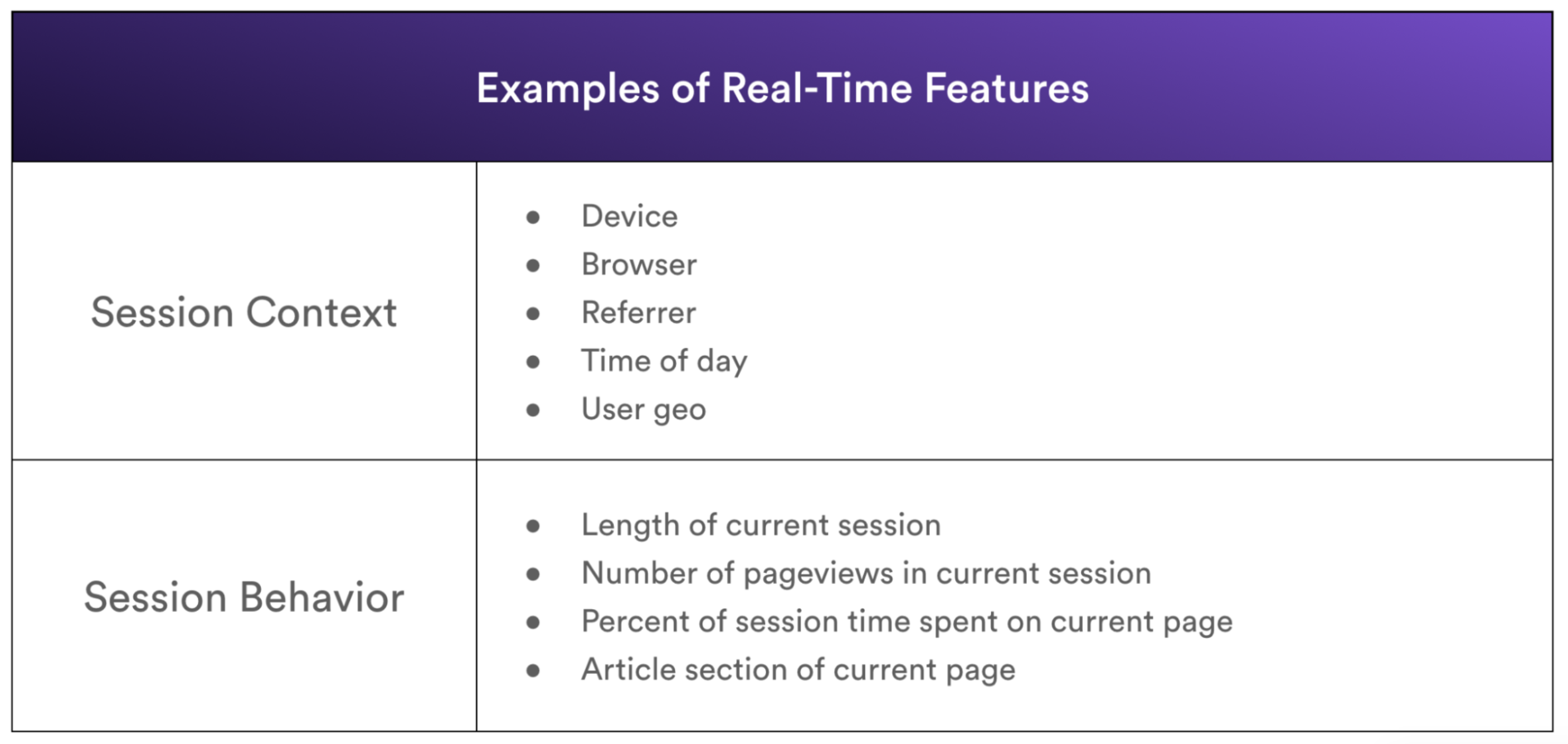
Historical data can often be integrated over a longer time period and can result in more complex user features. These features might include changes in user activity over time.
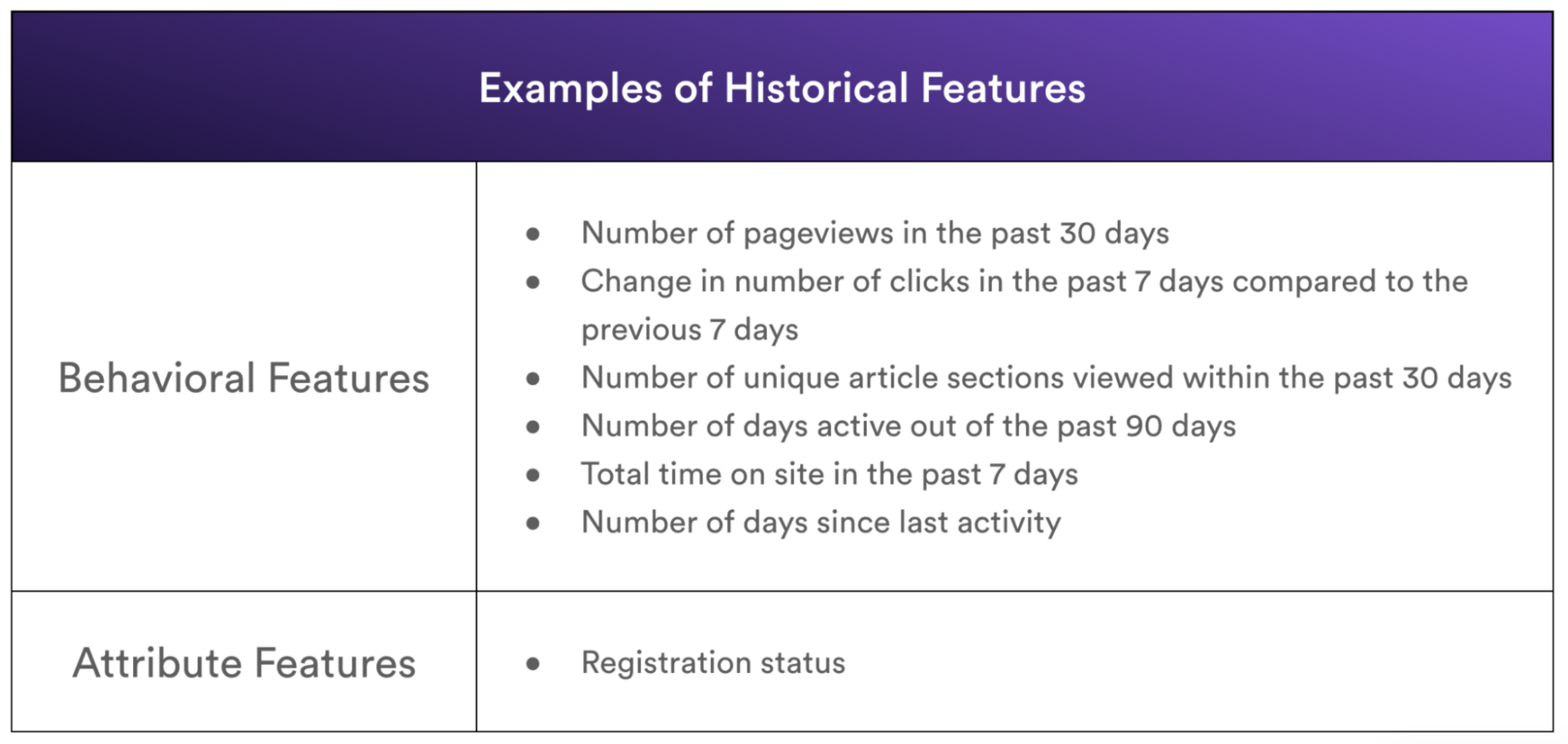
6. How Does Cortex Enable Real-Time Machine Learning Decisioning?
Vidora Cortex enables a business to combine both real-time and batch historical features in order to make machine learning decisions. We’ve designed a “best of both worlds” approach which enables a business to use both batch historical data (when available) and real-time data. Here’s a blog post which describes our approach in more detail.
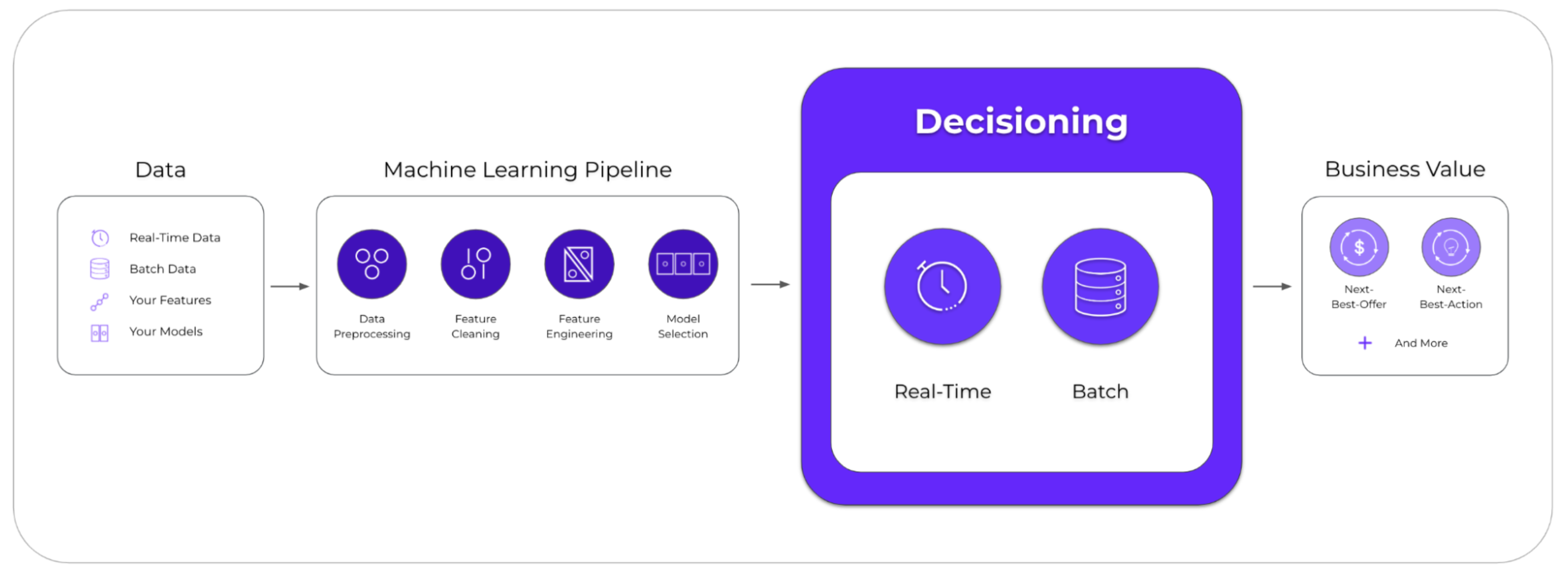
Combine batch and real-time data with the Vidora Decisioning SDK and increase conversions across your consumer experiences.
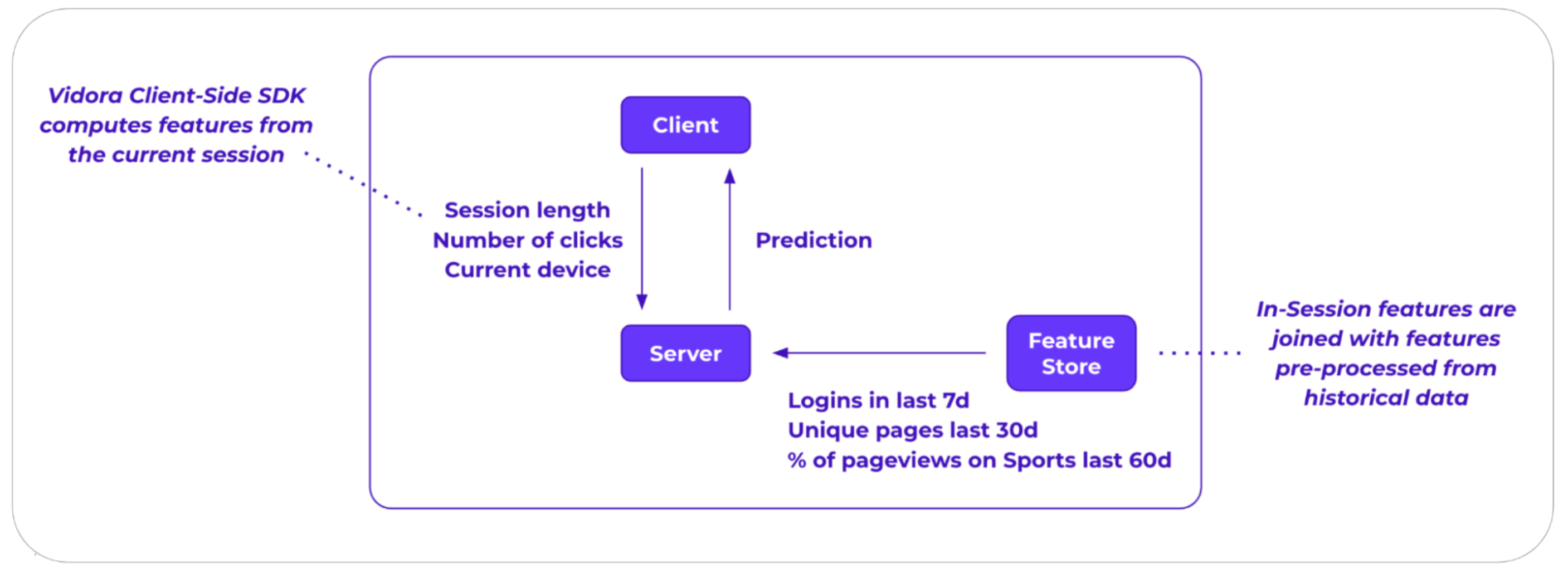
Vidora’s decisioning framework for real-time machine learning. Historical features are joined with in-sessions features.
7. What Features are Required for Machine Learning Decisioning?
Machine learning decisioning can be difficult to implement. The Vidora Decisioning SDK makes it easier for teams to take full advantage of their real-time and batch data. The Decisioning SDK leverages onsite behavioral data, such as clicks, shown events, content consumed, conversions, etc and featurizes these behaviors in real-time. These features are then used to train a model and make high value decisions.
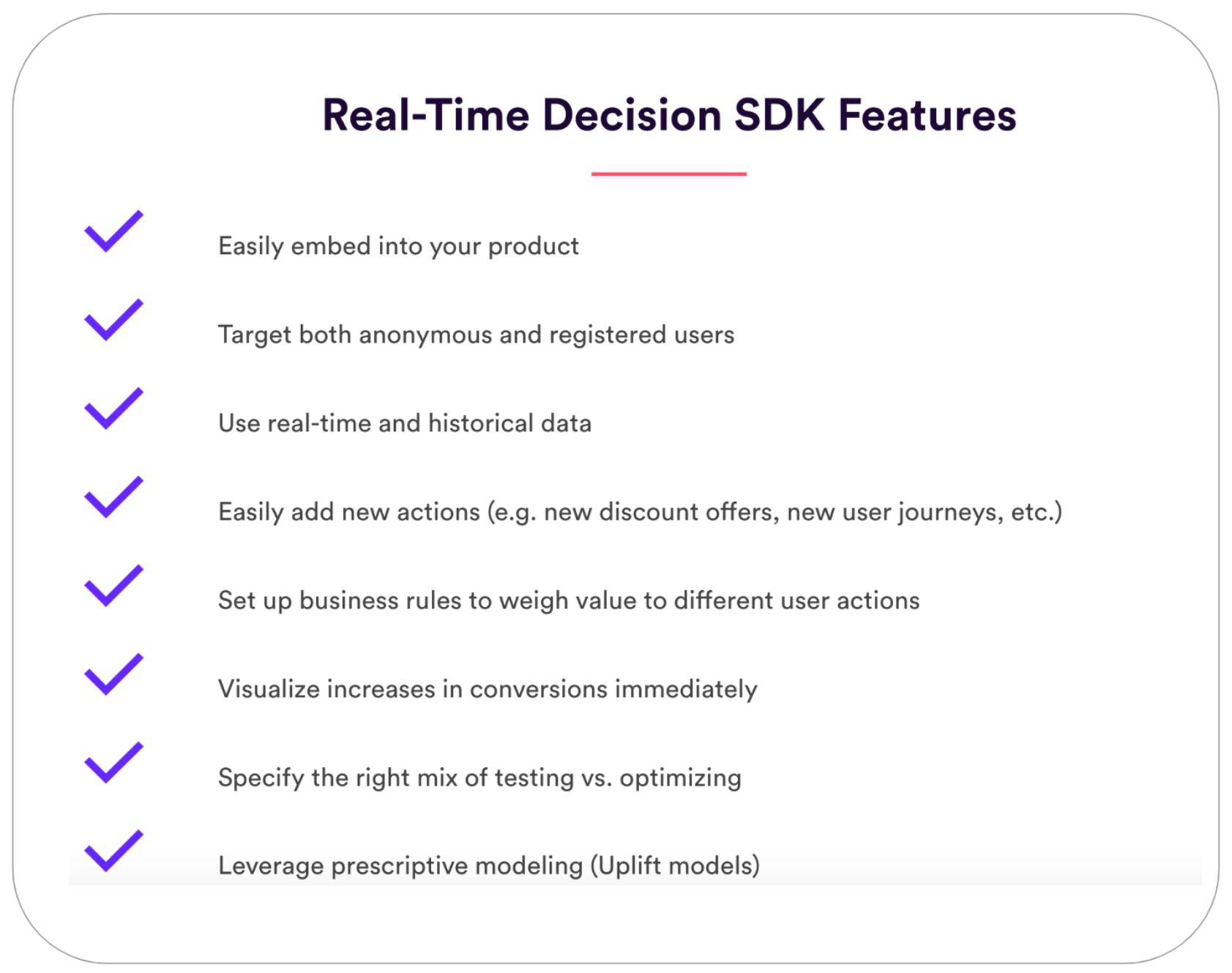
The Vidora Decisioning SDK includes many product components that make it straightforward for teams to implement real-time decisioning into existing workflows.
8. Why is Real-Time Machine Learning Decisioning so Exciting?
Machine learning decisioning is the natural evolution of machine learning from predictions to directly enabling a business to optimize a consumer experience. Adding in a real-time component to decisioning enables a business to make decisions using the most recent user behaviors, which also helps a business target anonymous and first-time users. As more businesses look to leverage techniques like next-best-action and next-best-offer, machine learning decisioning will only increase in relevance.
Vidora’s machine learning decisioning framework is designed to make it easier and faster for a business to deploy and iterate on their decision making experiences. If you are interested in learning more, please reach out and we can discuss how machine learning decisioning might benefit your business! Please contact us at info@vidora.com.
